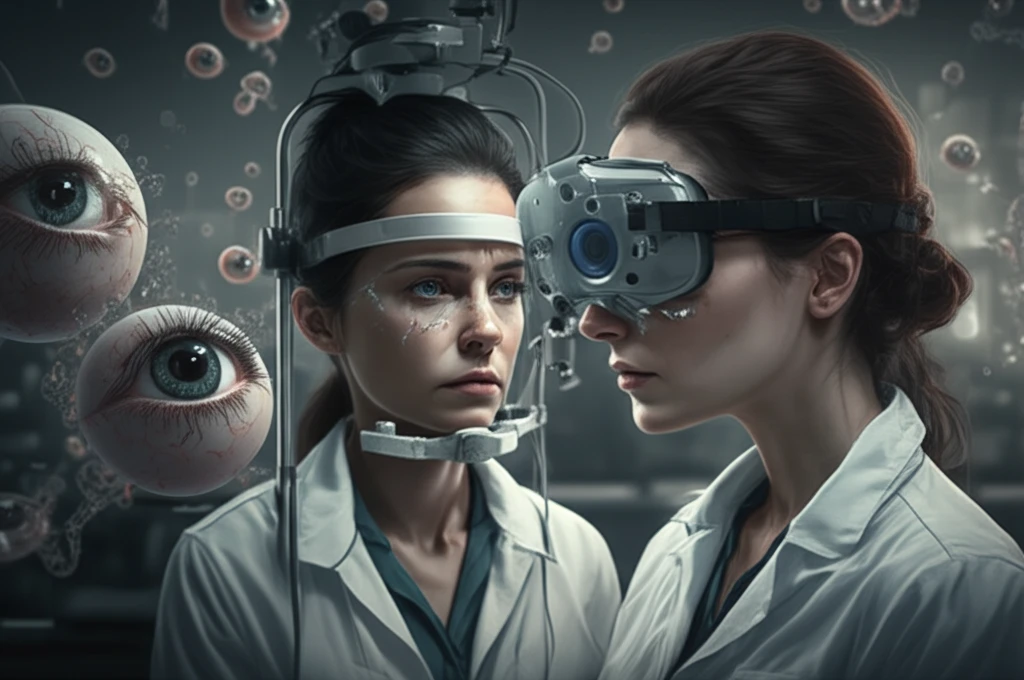
Mastering the Eye: How Virtual Reality Is Revolutionizing Ophthalmology Training
"A new study highlights the potential of VR-based direct ophthalmoscopy simulators in enhancing diagnostic skills for medical professionals."
Direct ophthalmoscopy, a fundamental skill in eye examinations, has long been a challenging area for young physicians. Traditional teaching methods often fall short due to the difficulty in providing contextual feedback, leaving many feeling unprepared. This is where virtual reality (VR) steps in, offering a promising alternative that could reshape medical education.
VR simulators provide a controlled and immersive environment where medical students can practice and refine their skills without the risks associated with real-world scenarios. However, the effectiveness of these simulators hinges on their validity and alignment with real-world clinical practice. Ensuring that VR training translates into tangible improvements in diagnostic accuracy is crucial to avoid the pitfalls of irrelevant or, worse, misleading training.
A recent study published in Acta Ophthalmologica explores the use of the EyeSi Direct Ophthalmoscope Simulator (v1.4, VRmagic) to assess and enhance the proficiency of medical students in direct ophthalmoscopy. The research delves into the validity of automated assessments provided by the simulator, offering valuable insights into the potential of VR in ophthalmology training.
The EyeSi Simulator: A New Frontier in Ophthalmology Education

The EyeSi Direct Ophthalmoscope Simulator (v1.4, VRmagic) presents a virtual reality-based interactive environment designed to mimic the experience of performing direct ophthalmoscopy. This simulator offers medical students the opportunity to practice handling the ophthalmoscope, examining the fundus, and identifying various objects and anomalies in a risk-free setting. The automated assessments provided by the simulator aim to provide objective feedback, a critical component often lacking in traditional training methods.
- Module A & B: Focus on device handling and basic examination techniques.
- Module C & D: Emphasize the interpretation and documentation of healthy and pathological retinas.
The Future of Ophthalmology Training
The integration of VR simulators into medical education represents a significant step forward in preparing future ophthalmologists. By providing a safe, controlled, and realistic environment for training, these simulators can enhance proficiency, boost confidence, and ultimately improve patient care. The results of this study, along with ongoing advancements in VR technology, suggest a promising future for VR-based medical training.
